




Discover the best time to visit Rome to truly capture the essence of the Eternal City. Find out the secrets of how to avoid crowds, enjoy pleasant weather, or experience local festivals. Your timing is crucial, so take advantage of this guide to learn more!
For a perfect vacation, creating a well-crafted itinerary is essential. It's a good thing that there's a large selection of tours in the Italian capital where you can choose the best activities. There's also a wide range of Roman travel packages and a diverse array of accommodations in Italy's largest city for a seamless trip.
Rome beautifully blends ancient history with vibrant modern life, creating an unforgettable experience for travelers. This guide will help you plan your journey, so read on to maximize your visit!
Monthly Weather Overview for the Best Time To Visit Rome

Rome boasts a Mediterranean climate with sunny, dry summers and mild, rainy winters. Each season offers a unique experience, from the bustling summer days to the serene winter evenings. Here’s a detailed monthly breakdown of the weather in Rome:
- January: It’s cool and often wet, with average temperatures about 46 F (8 C).
- February: The month offers a slightly warmer but still cool climate, with average temperatures around 48 F (9 C).
- March: Spring begins, and average temperatures rise to about 54 F (12 C).
- April: It’s pleasant and mild, with temperatures around 59 F (15 C).
- May: The weather is warm and comfortable, averaging 66 F (19 C).
- June: The hot and dry climate is characterized by temperatures about 73 F (23 C).
- July: You’ll experience peak summer heat, averaging 79 F (26 C).
- August: It’s continuously hot, and many locals leave the city for vacation.
- September: The temperature is warm with gradual cooling, around 73 F (23 C).
- October: This month is cooler and pleasant; temperatures average 63 F (17 C).
- November: It’s cooler and wetter, around 54 F (12 C).
- December: The month is cool and festive, averaging 48 F (9 C).
Seasonal Guide for the Best Time To Visit Rome

Rome offers unique experiences throughout the year, with each season bringing its own charm to the city. With spring's outdoor activities or winter's holiday festivities, there’s always something special to discover every season.
Visiting Rome in Spring: March to May

Spring in Rome is a magical time. As the city awakens from its winter slumber, the streets are filled with blossoming flowers and the fresh scent of new beginnings. The blooming landscapes make it a perfect time for sightseeing and hiking tours in Rome. It's also a great chance to enjoy various cultural events.
Spring Weather in Rome

Mild to warm temperatures characterize spring in Rome, averaging between 50 F (10 C) and 70 F (21 C). Spring days are longer, and there's more sunshine, ideal for sightseeing tours in the Italian capital. Rain showers are occasional but generally brief, refreshing the city and bringing vibrant lushness to its parks and gardens.
Spring Crowds in Rome

Crowds in Rome increase in late April, peaking around Easter. So, if you plan to visit during spring, March and early April are the best times to visit Rome if you prefer a less crowded and more peaceful experience.
Top Spring Activities in Rome

Spring in Rome is a season of renewal, where the city's history and culture bloom against a backdrop of blossoming flowers and pleasant weather. As the days grow longer and warmer, the Eternal City invites you to take part in the following spring activities:
Exploring Villa Borghese Gardens

Villa Borghese is a stunning public park in the heart of Rome, renowned for its gardens, art galleries, and historical significance. Spanning 198 acres (80 hectares), it's home to beautifully landscaped grounds, charming fountains, and impressive sculptures.
The gardens are in full bloom during spring, providing a serene escape from the city's hustle and bustle. You can rent a bike, take a leisurely stroll, or enjoy a picnic surrounded by the vibrant colors of flowers. This makes spring one of the best times to visit Rome if you want to enjoy its natural beauty.
The park can be a great starting point for a Roman golf cart tour from Villa Borghese Gardens, which allows you to explore in comfort. For a more intimate experience, a small-group tour of the Borghese Gallery and Villa Borghese Gardens provides an in-depth look at the art and beauty of this historic site.
Enjoy Outdoor Dining in Rome

Spring is the perfect time to enjoy alfresco dining, sample local produce, and immerse yourself in Rome's lively street life. In particular, two spots that embody this buzzing atmosphere are the Trastevere neighborhood and Campo de Fiori square.
In Trastevere, cobblestone streets lined with cafes and restaurants present a delightful setting for an outdoor meal. As you dine, you can enjoy the animated ambiance, with street musicians and locals adding to the charm of this area.
Meanwhile, Campo de Fiori offers a bustling open-air market during the day, where you can savor fresh produce and artisanal goods. As evening falls, the square transforms into a bustling hub with outdoor seating in restaurants and bars. Here, you can relish Italian dishes while soaking up the energy of one of the city's most famous piazzas.
Spring in Rome is ideal for alfresco dining, with Trastevere and Campo de Fiori as standout locations. Trastevere's charming streets present a lively atmosphere for outdoor meals, while Campo de Fiori combines a bustling day market with vibrant evening dining options. Together, they showcase the best of Roman culture and cuisine.
Take Part in Rome’s Birthday Celebration on April 21
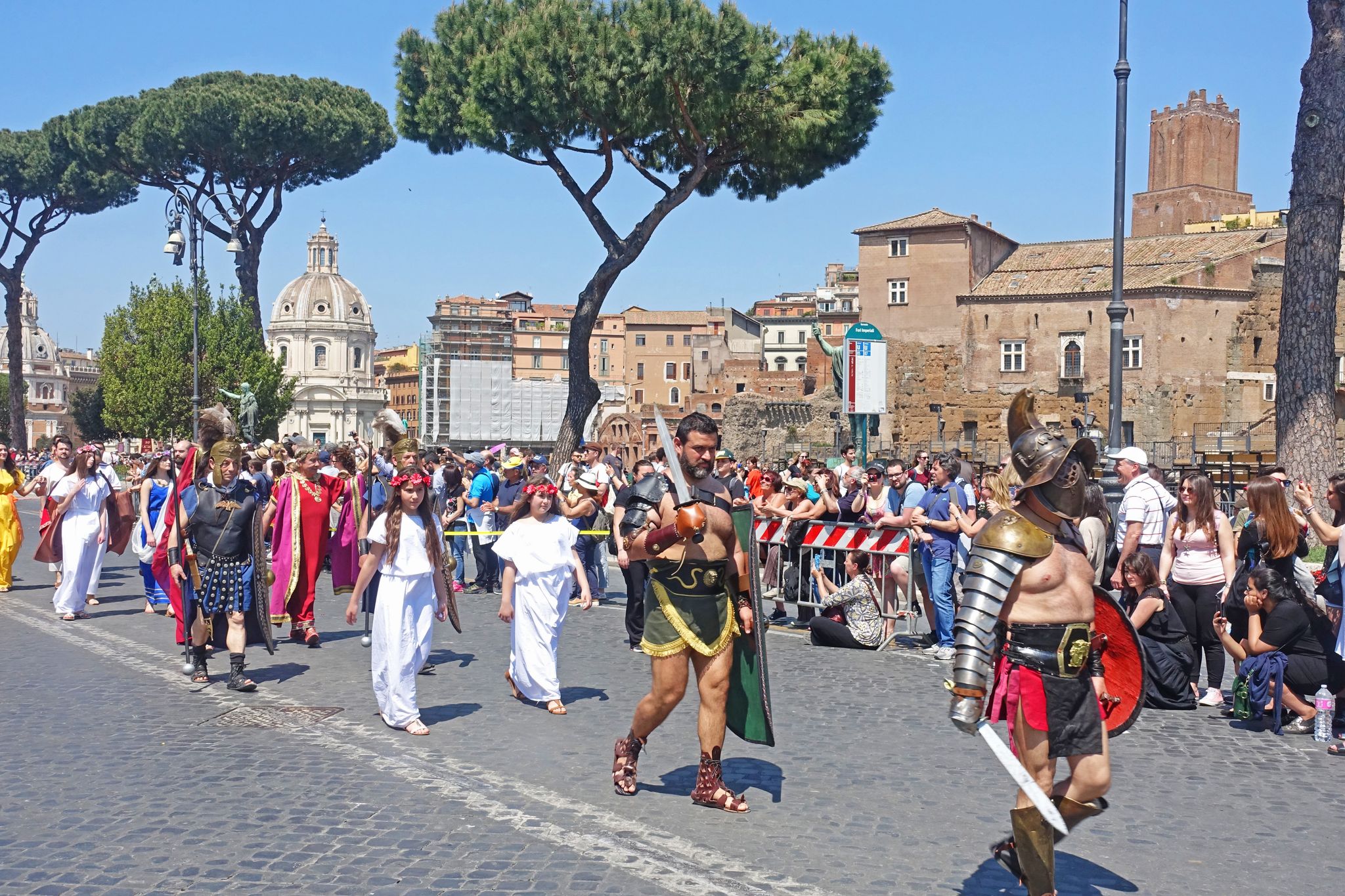
Every year on April 21, the vibrant celebration known as Natale di Roma offers a captivating glimpse into the history of the Eternal City. This event marks Rome's founding anniversary and features grand festivities that bring the city's rich cultural heritage to life.
Colorful parades wind through the streets, showcasing participants dressed in period costumes that reflect various periods in Roman history. There are also reenactments, including fascinating scenes from ancient times, where performers engage in thrilling displays that evoke the spirit of a bygone era.
With some museums opening their doors for free on April 21, this day becomes an extraordinary opportunity to immerse yourself in Rome's rich history and culture. The city warmly invites everyone to partake in its timeless celebration, offering a unique chance to explore its heritage and experience the vibrant spirit of the Eternal City.
Experience Easter Celebrations in Rome
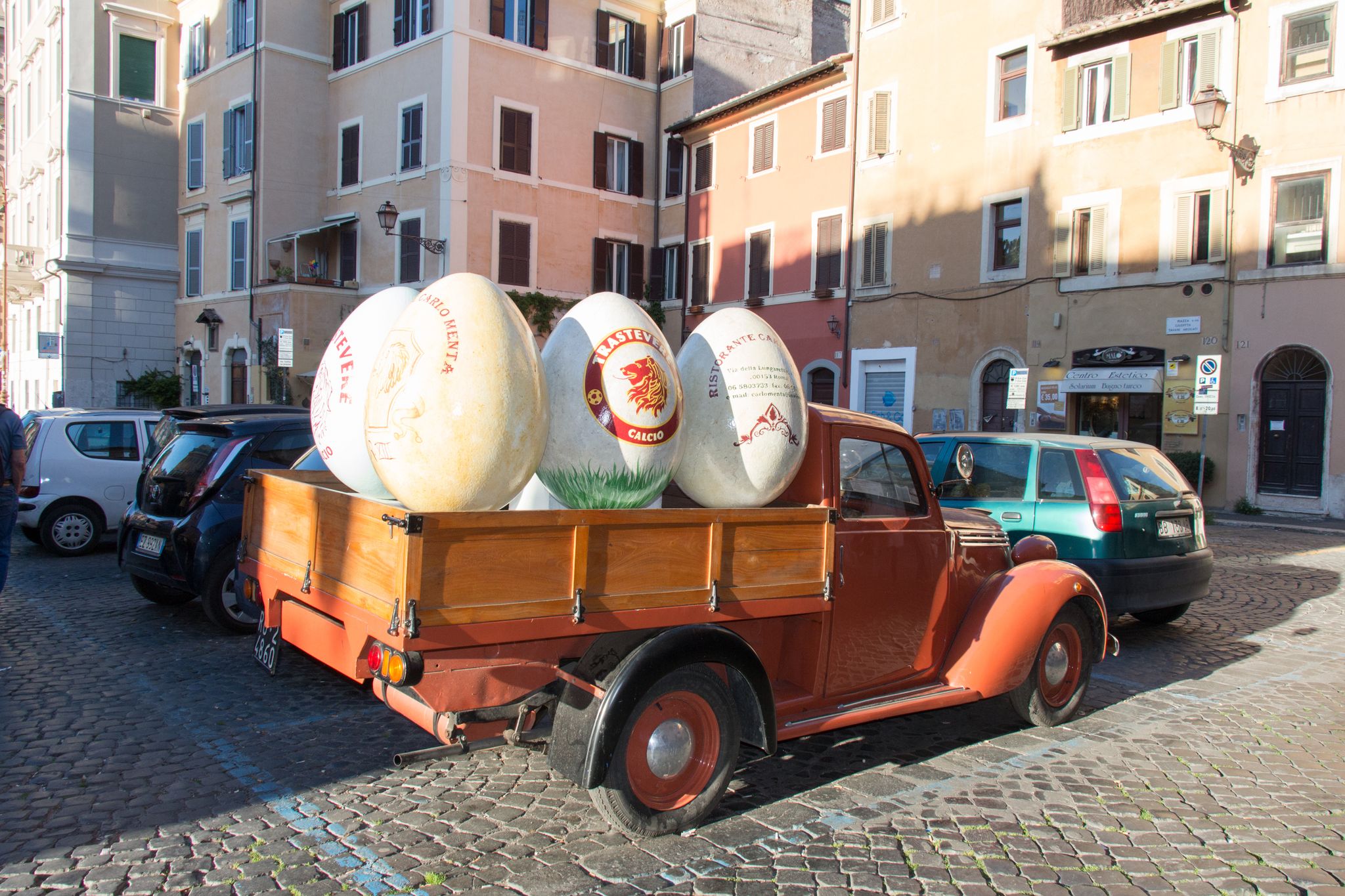
Easter in Rome is a spiritual event that draws pilgrims and tourists to the city's core. It begins with the solemn Good Friday Mass at St. Peter's Basilica, led by the pope. The mass reflects on Christ's sacrifice and honors His cross, embodying the themes of redemption and hope central to Easter celebrations.
A significant highlight of the celebrations is the Via Crucis procession to the Colosseum. On this journey, the pope leads a poignant ceremony retracing Jesus' journey to the crucifixion. This event, rich in history and emotion, attracts thousands each year.
Finally, you can participate in the Easter Mass at the Vatican. In St. Peter’s Square, the pope delivers his traditional Urbi et Orbi blessing to the city and the world. This open-air event fosters a sense of community among participants from around the globe, celebrating one of Christianity's most important days.
Explore Rome’s Ancient Structures

With pleasant weather, spring is an ideal time to explore Rome's iconic ancient sites without the scorching summer heat. You can wander through the ruins of the Roman Forum, discover the historical significance of Palatine Hill, and marvel at the grandeur of the Colosseum.
Take a skip-the-line guided tour of the Colosseum, Roman Forum, and Palatine Hill. This option not only allows you fast-track access to the attractions but also provides valuable context and fascinating stories about these famous landmarks.
Embark on a Scenic Cruise Along the Tiber River

Embarking on a panoramic boat cruise along the Tiber River is one of the most enchanting ways to experience Rome in the spring. With the weather warming up, a river cruise offers a comfortable ride to enjoy a unique perspective of iconic landmarks.
Get a glimpse of Castel Sant'Angelo and the Vatican, along with the picturesque bridges that connect the city's historic districts. The gentle flow of the river provides a serene backdrop for soaking in stunning views and a lively atmosphere.
For an unforgettable night, an evening Rome river cruise with an aperitif offers a refreshing drink while enjoying the starry views of the city. Alternatively, indulge in urban rafting on the Tiber River, which combines gentle rapids with breathtaking scenery for an exciting way to explore the historic waterways.
Is It Worth It To Visit Rome in Spring

Spring in Rome is a magical time to visit because of its vibrant flowers and mild temperatures, making it an ideal season for sightseeing. Below, we’ve outlined the pros and cons of visiting Rome in spring to help you weigh the charm of this season against its potential drawbacks.
Pros of Visiting Rome in Spring
- Pleasant weather is ideal for outdoor activities.
- Blooming flowers and lush greenery enhance the city's beauty.
- Easter celebrations and events offer unique cultural experiences.
Cons of Visiting Rome in Spring
- It gets more crowded towards Easter.
- Accommodation prices rise around the major spring holidays.
- There are occasional rain showers, though usually brief.
Visiting Rome in Summer: June to August

Summer is the high season, characterized by long, sunny days and a bustling atmosphere. This is one of the best times to visit Rome if you’re interested in outdoor events, summer festivals, and open-air activities. The extended daylight hours allow more time to explore and enjoy the Eternal City's top attractions.
Summer Weather in Rome
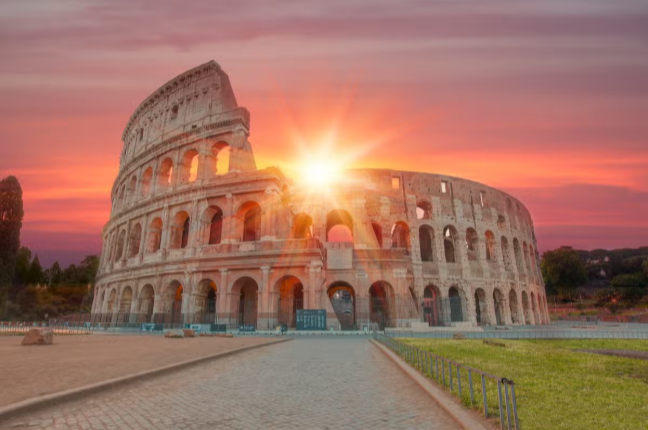
Summer temperatures can soar, often reaching up to 90 F (32 C) or higher, particularly during the peak months of July and August. The combination of intense temperatures and increased humidity can make the city feel even warmer, so it's essential to come prepared for the hot weather.
Summer Crowds in Rome

Despite the heat, summer is the peak tourist season, and the city is crowded with visitors from around the world. It's advisable to plan your sightseeing for early morning or late afternoon to avoid the intense midday sun and crowds.
Top Summer Activities in Rome

Summer in Rome is perfect for outdoor activities and festive celebrations. Take advantage of the warm weather by enjoying trips to nearby beaches, night tours of famous attractions, and outdoor cinema events. Extended daylight makes it an ideal time to experience the city’s vibrant summer offerings.
Experience the Magic of Estate Romana

Estate Romana is a lively summer festival in Rome, typically running from June to September, featuring concerts, theater performances, dance, and art exhibitions. This event attracts both locals and tourists, making summer the best time to visit Rome if you want to experience the city's cultural gems.
Outdoor concerts in historic piazzas and art exhibitions at iconic landmarks not only highlight Rome's rich heritage but also provide the stage for thrilling celebrations. Set against stunning locations such as the Roman Forum and Villa Borghese, Estate Romana offers a glimpse into the city's dynamic scene.
Join the Festivities at Festa de' Noantri

This cherished local festival, known as Festa de' Noantri, is held every July in Rome's Trastevere district. With roots dating back to 1535, the festival features vibrant processions, traditional music, and lively gatherings that highlight the community's cultural heritage.
The festival honors Madonna Fiumarola with a beautifully adorned statue paraded from the Sant'Agata Church to the San Crisogono Church. As part of a ceremonial procession, the statue will be returned by boat along the Tiber River after eight days.
The Festa de' Noantri is not only a religious observance but also a community celebration. You'll find food stalls, concerts, and cultural events throughout Trastevere. The festival offers a unique opportunity to take part in authentic local traditions during one of the best times to visit Rome.
Enjoy Coastal Day Trips From Rome

The Italian capital’s proximity to the coast provides an excellent opportunity for refreshing trips and excursions from Rome. Popular beach destinations like Santa Marinella and Fregene are both easily accessible by train, making them ideal choices for a quick escape from the city.
Santa Marinella, located just 45 minutes from Rome by train, is celebrated for its stunning sandy beaches. In the summer, enjoy water sports, delicious local cuisine, scenic waterfront strolls, and vibrant evening entertainment. There's more to Santa Marinella than beaches, making it a must-visit spot for relaxation and adventure.
Alternatively, Fregene, located roughly 21 minutes by train from Rome, is known for its beach culture and lively atmosphere. With a sandy shoreline dotted with trendy beach clubs, it offers the perfect escape for leisure and fun. During the summer, visitors can also enjoy sunbathing, water sports, and exciting nightlife.
Discover Rome After Dark on a Night Tour

Night tours in Rome offer a captivating way to discover the city's rich heritage after sunset. Wander through ancient streets and illuminated landmarks that create a magical atmosphere. This unique experience allows you to appreciate Rome's iconic sites in a way that daytime visits simply can't match.
One popular option is a Rome moonlight small group walking tour, which allows you to explore the city's famous attractions under the stars. For those seeking a bit of excitement, an evening Vespa tour in Rome offers a thrilling ride through the historic streets, combining speed with stunning views.
Meanwhile, a haunted Rome ghost tour immerses participants in the city's eerie past, featuring chilling tales of ghosts and legends that haunt the streets. In contrast, a small group Rome night tour for kids and families offers a more lighthearted exploration, focusing on fun stories tailored to younger audiences.
Savor Rome in a Gelato-Tasting Adventure
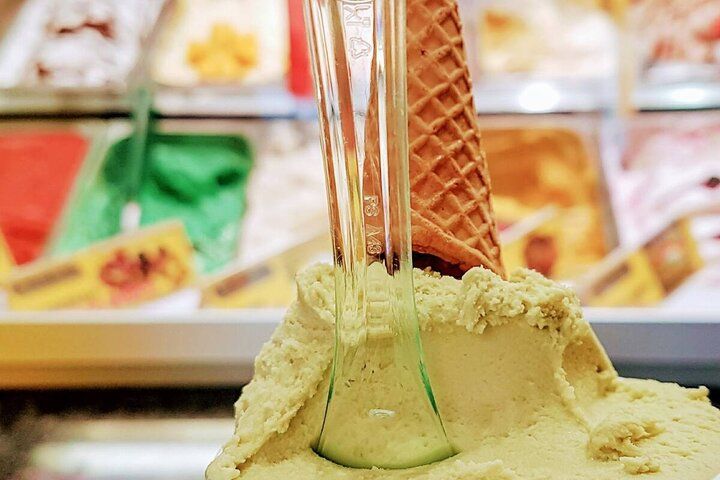
Take a gelato-tasting adventure in Rome, where the city’s rich culinary heritage is celebrated with every delicious bite. Explore Trastevere and the historic center, where you can find some of the best gelaterias serving delightful flavors. If you're curious, you can even make your own gelato in Rome and eat it, too!
An Italian gelato-making experience in Rome is truly unique, allowing you to immerse yourself in the art of crafting this beloved dessert. Under an expert's guidance, you’ll learn about the essential ingredients and techniques that make authentic gelato so special.
If you don't have enough time for a gelato-making class in Rome, you can just go on a walking tour through the heart of the Italian capital with gelato in hand. This time-saving combination not only satisfies your sweet tooth but also enriches your understanding of Roman culture and history.
Enjoy Outdoor Movie Screenings in Rome

The Italian capital's outdoor cinema scene is delightful, especially during the summer months. The best time to visit Rome for these screenings is from June to September when various locations transform into open-air theaters.
One highlight is the Cinema in Piazza festival, featuring film viewings at iconic locations like Piazza San Cosimato. Running typically from early June to mid-July, it showcases a diverse lineup of movies in their original language with Italian subtitles.
Another great venue is the Casa del Cinema in Villa Borghese, where nightly screenings feature Italian and international films. Experiencing outdoor movies adds a unique charm to your trip, making summer one of the best times to visit Rome.
Is It Worth It To Visit Rome in Summer

Summer in Rome offers lengthy, sunny days and a lively energy that fills the streets, but it also comes with challenges. To help you decide if summer is worth it, here’s a quick look at the pros and cons of visiting during this bustling season.
Pros of Visiting Rome in Summer
- The city atmosphere is vibrant, with numerous festivals and events.
- Long daylight hours provide extended sightseeing opportunities.
- You’ll have no shortage of day trips and outdoor activities to experience.
Cons of Visiting Rome in Summer
- There's intense heat, especially during midday.
- Expect large crowds and long lines at major attractions.
- The prices of accommodation and flights are higher.
Visiting Rome in Autumn: September to November

Visiting in autumn offers a wonderful blend of cultural richness and natural beauty. As the summer crowds thin out, Rome transforms into a tranquil haven. With vibrant fall colors, autumn encourages travelers to enjoy the city's charm more slowly.
Autumn Weather in Rome

Temperatures in autumn range from 50 F (10 C) to 75 F (24 C). The weather is typically mild, with refreshing rain showers now and then. As the season progresses, particularly in November, the days become shorter and cooler, often leading to a more noticeable chill in the air during the evenings.
Autumn Crowds in Rome

In autumn, tourist crowds are significantly lower than in summer, especially in November. This makes it the best time to visit Rome if you want to enjoy popular attractions leisurely without the long lines and overwhelming throngs of visitors.
Top Autumn Activities in Rome

Autumn in Rome presents a blend of cultural festivities and historical exploration. Visitors can attend harvest festivals and film screenings and indulge in seasonal cuisine. The cooler temperatures enhance the enjoyment of cultural events, while the reduced crowds allow for a more intimate experience at popular landmarks.
Explore Rome’s Historic Sites in Autumn

Exploring in autumn offers the chance to delve into the city's rich history while enjoying the beautiful seasonal scenery. Historical tours in Rome become particularly enchanting during this time, as the cooler temperatures and reduced crowds create an ideal environment for exploration.
One of the most captivating experiences is an e-bike tour of the Appian Way, the Catacombs, and the Roman Aqueducts. Such a tour takes you along one of the earliest and most important Roman roads, where you can explore ancient tombs and marvel at impressive architecture.
Additionally, a Vatican Museums, Sistine Chapel, and St Peter’s Basilica guided tour from Rome provides an intimate look at some of the world's most renowned artistic treasures. The tour is led by a professional guide who explains the historical significance of each piece of art and the inspiring stories behind them.
For a more personalized experience, consider a private tour of the best of Rome by golf cart, which offers a unique way to navigate the city's streets. Alternatively, a Rome Segway tour from Via dei Delfini allows effortless exploration while enjoying the crisp autumn air.
Attend Harvest Festivals in and Around Rome

Fall ushers in harvest festivals in and around Rome, with the Vendemmiata Romana taking center stage. Typically held at the Botanical Garden in Trastevere, this event celebrates the grape harvest through wine tastings, engaging workshops, and family-friendly activities, reviving ancient traditions every September.
Beyond the city, nearby areas also host harvest festivals, such as the Marino Wine Festival in October, offering a taste of local wines and culinary delights. Taking advantage of transfers and transportation in Rome makes it easy to explore these festive events and fully enjoy the region's rich agricultural heritage.
Experiencing harvest festivals like the Vendemmiata Romana is among the top activities to experience during one of the best times to visit Rome. These events provide an exciting glimpse into local culture and traditions while enjoying autumn's bounty.
Experience Rome’s Cultural Events in Autumn

Rome's fall season is vibrant with cultural events, like the Rome Art Week and the Rome Film Festival. These events showcase the city's rich artistic heritage and contemporary creativity, making the season the best time to visit Rome for art and cinema enthusiasts.
During Rome Art Week, which takes place in October, visitors can engage in free events across galleries and studios celebrating artistic expression in the city. This immersive experience invites art lovers to explore exhibitions, guided tours, and performances that highlight the Italian capital's dynamic artistic landscape.
In parallel, the Rome Film Festival showcases a diverse lineup of films from around the globe, attracting international stars like Robert De Niro, Nicole Kidman, and Joaquin Phoenix. Also held in October, the festival features a variety of premieres and screenings, making it a vibrant hub for film lovers.
Together, these events exemplify why autumn is considered the best time to visit Rome for those seeking artistic inspiration. These fall events not only highlight the city's cultural landscape but also provide unique opportunities to engage with its dynamic arts scene.
Experience the Delights of Wine Tasting in Rome

Wine-tasting experiences in Rome offer a delightful way to immerse yourself in the local culture and flavors. This rich experience is particularly vibrant during the fall harvest season, between September and October, considered to be the best time to visit Rome for fans of this beloved beverage.
For a memorable experience, indulge in a fine wine and gourmet dinner with a sommelier near the Roman Pantheon, where you can savor exquisite pairings. Alternatively, join a tipsy painting class in Rome, which combines creativity with local drinks for a fun and interactive outing.
To wrap it up, taking a course to delve deeper into Rome's wines will enrich your understanding and appreciation of its diverse offerings. Remember, a Roman holiday is incomplete without enjoying a local wine tasting in the Italian capital!
Join Walking Tours in Rome
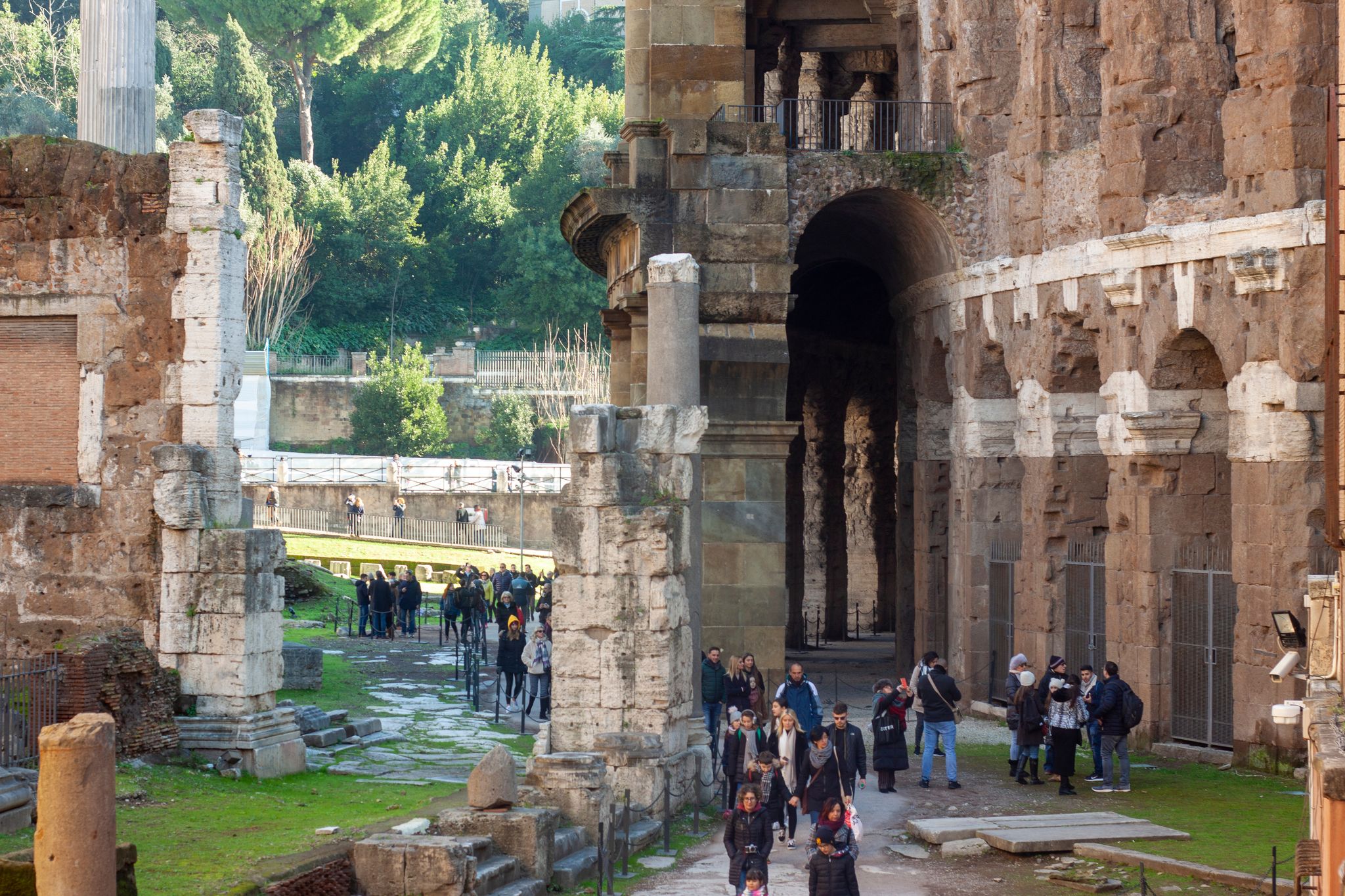
Experience the beauty of the Eternal City in autumn with walking tours in Rome. This season, with its mild temperatures and vibrant foliage, creates an enchanting atmosphere perfect for exploration.
Join a small-group walking tour to discover Rome's well-known attractions, including the Trevi Fountain, Piazza Navona, and the Pantheon. As an alternative, you can wander through the highlights of Italy's ancient capital on a walking tour to marvel at century-old structures while learning interesting historical facts.
For a culinary twist, consider a sunset walking tour of the Prati district to sample the best food and wine offerings. As you immerse yourself in the city's rich history and flavors, you'll find that autumn is truly the best time to visit Rome if you want to walk around this timeless capital.
Master Italian Cuisine in a Cooking Class in Rome

Autumn is the best time to visit Rome for culinary lessons in the Italian capital. In the fall, you can enjoy an authentic Roman cooking class and market experience when seasonal ingredients fill the markets. These fresh offerings enhance your dishes, allowing you to savor autumn flavors in every bite.
Participate in a pasta cooking class led by a local chef in Rome, especially if you are keen on mastering fettuccine and ravioli. You can also learn how to make gluten-free pasta in the Italian capital, ensuring everyone can enjoy the country's delicious flavors.
Take a pizza cooking class near Piazza Navona, or head to Central Rome for a pasta- and pesto sauce-making session. These classes will deepen your appreciation for Italian cuisine while enjoying the vibrant atmosphere of the city's most picturesque areas.
Savor the Flavors of Roman Cuisine

Autumn is a great time to savor Roman dishes due to the variety of seasonal produce, like truffles. During the season, these ingredients are available on many restaurants' special menus. This abundance invites you to relish dishes such as pasta with truffle shavings or creamy truffle risotto.
To truly experience the city, eat like a local on a street food tour of Rome. Explore vibrant neighborhoods like Campo Marzio for sightseeing and sampling delicious dishes that highlight the city's rich food heritage.
Wrap up your delectable adventure with a Campo de Fiori Market and Trevi Fountain culinary and wine tour, followed by a delightful Trastevere food crawl at twilight. One of the best times to visit Rome aligns perfectly with these gastronomic experiences, providing you with a memorable trip.
Is It Worth It To Visit Rome in Autumn
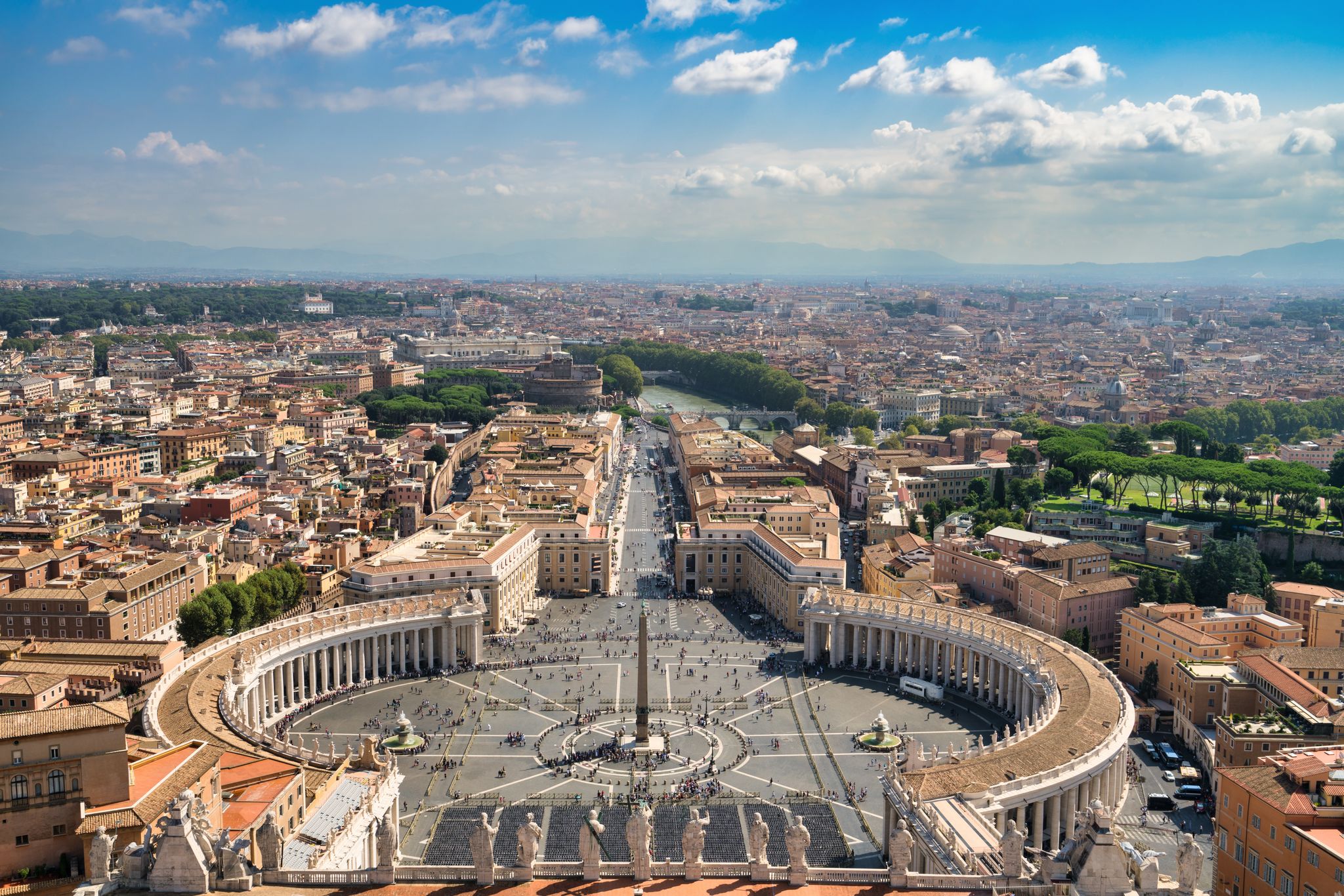
Autumn is a season of golden light, cooler temperatures, and a more relaxed pace compared to summer’s frenzy. Below, we’ve broken down the pros and cons of visiting Rome in the fall to help you decide if this picturesque season fits into your travel plans.
Pros of Visiting Rome in Autumn
- The mild weather is ideal for sightseeing.
- You'll have a more relaxed visit with fewer crowds.
- Harvest festivals and cultural events offer unique experiences.
Cons of Visiting Rome in Autumn
- This time of year has shorter daylight hours compared to summer.
- There's potential for rain, though usually not heavy.
- Some attractions may have shorter opening hours.
Visiting Rome in Winter: December to February
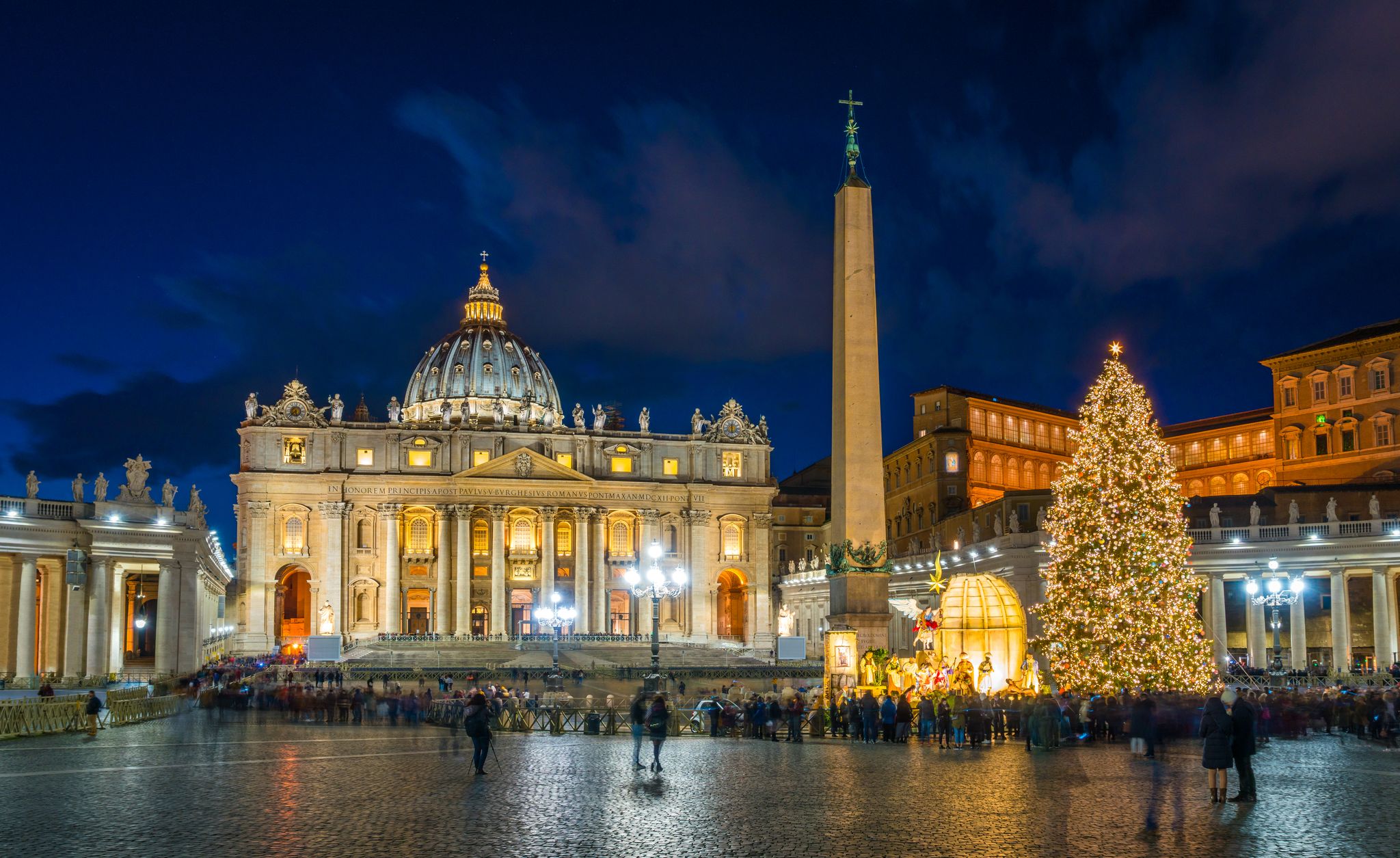
Visiting Rome in winter offers a distinct charm that sets it apart from the bustling summer months. With fewer tourists and a mild climate, the city becomes an inviting canvas for exploration. This season brings a festive atmosphere with seasonal activities and decorations that enhance the beauty of the Eternal City.
Winter Weather in Rome

Winter temperatures in Rome range from 40 F (4 C) to 55 F (13 C), which is mild compared to many other European cities. While it's cold, snow is rare, and temperatures rarely drop below freezing.
Winter Crowds in Rome

The crowds during this season are minimal, except during the Christmas and New Year holidays. This makes it the best time to visit Rome’s museums, churches, and other attractions without long waits.
Top Winter Activities in Rome

Winter in Rome offers festive charm and exciting experiences. The city dazzles with vibrant holiday celebrations, inviting thermal baths, renowned museums, and tempting shopping deals. As the season unfolds, it becomes the perfect opportunity to explore indoor attractions while embracing the joyful atmosphere.
Discover the Cultural Treasures of Rome's Museums

Winter is a great time to explore Rome's museums and galleries without the usual crowds. With cozy indoor spaces and special exhibits, you can fully immerse yourself in art and culture while enjoying a peaceful atmosphere.
For an enriching experience, consider ordering fast-track access to the Vatican Museums and Sistine Chapel, along with a skip-the-line entry to the Borghese Gallery. These options ensure a convenient visit, allowing you to make the most of your time even during the quieter winter months.
Purchase a Doria Pamphilj Gallery entrance ticket, as well as a Leonardo da Vinci Experience admission pass. These attractions are perfect for art lovers wanting to appreciate Rome's rich artistic heritage without delay.
To wrap it up, make sure to get the full experience at the Capitolini and Centrale Montemartini Museums. This combination will ensure that you enjoy both historical and contemporary highlights during the best time to visit Rome for museum explorations.
Unwrap the Joy of Rome's Holiday Celebrations

Christmas and New Year in Rome are magical experiences, drawing visitors to the Eternal City for its festive spirit and rich traditions. If you want to be transported into a whimsical atmosphere, the holiday season is the best time to visit Rome, which is adorned with lights and decorations that enhance its historic charm.
Christmas in Rome is particularly enchanting, highlighted by a Christmas Eve aperitivo and mass at St. Peter's Basilica, where thousands gather to celebrate. The vibrant Christmas markets, especially in Piazza Navona, offer a delightful array of local crafts and seasonal treats, a perfect spot for holiday shopping.
To fully embrace the holiday, celebrate the Yuletide season on a small group Rome walking tour. You can also experience a Christmas Baroque Concert in the Capuchin Crypt for an unforgettable cultural immersion.
As the year ends, New Year celebrations in Rome are equally captivating, featuring fireworks over the Colosseum and lively street parties. The atmosphere is electric as locals and tourists come together to ring in the new year with joy and excitement.
Explore Rome's Historic Bathhouses
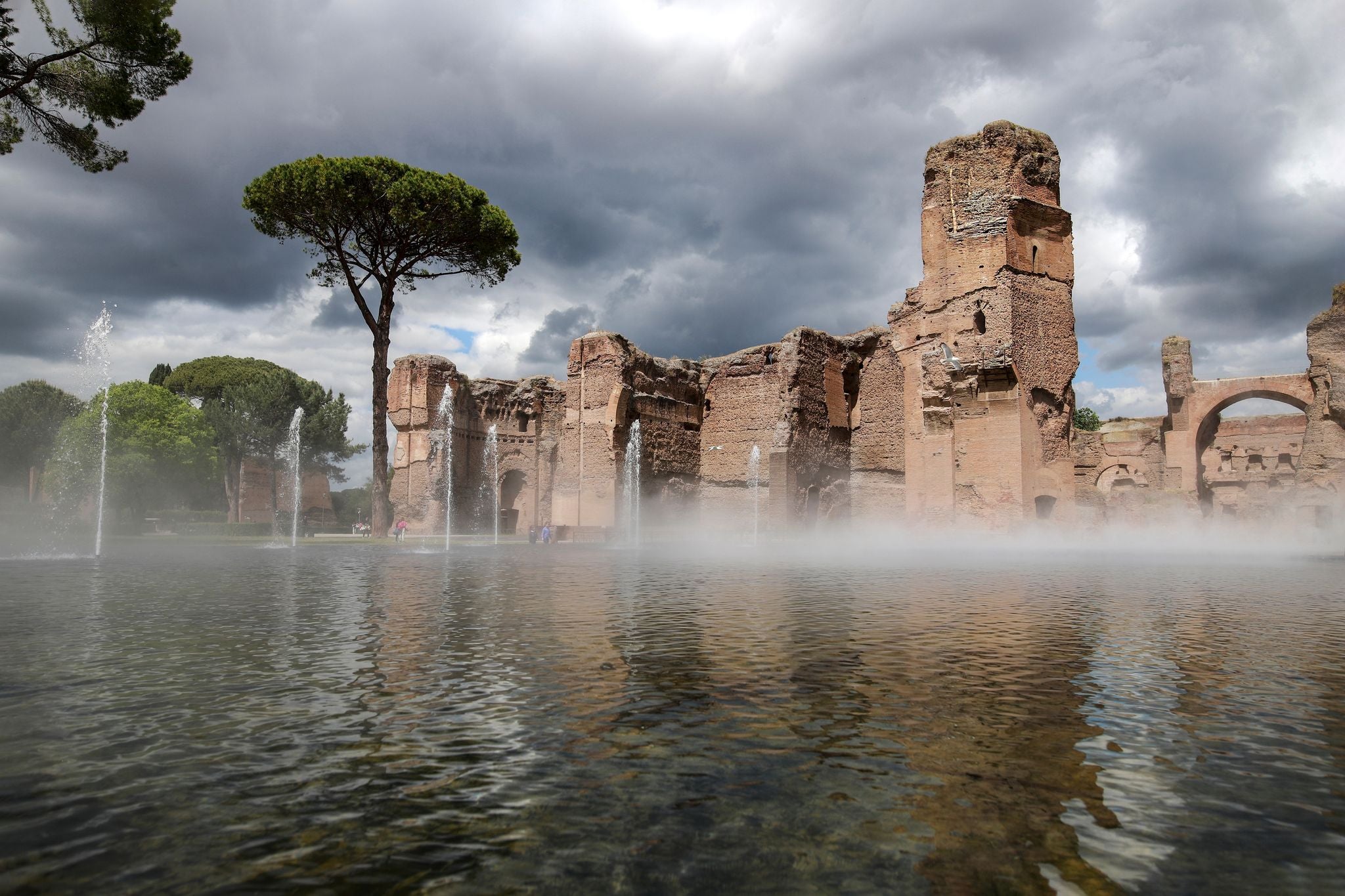
Roman bathhouses, or thermae, were vital social centers in ancient Rome, providing spaces for hygiene and community interaction. The Baths of Caracalla and the Baths of Diocletian exemplify the era's architectural brilliance. Visiting these sites provides a captivating insight into Roman lifestyles and bathing practices.
With a Baths of Caracalla skip-the-line entrance, you can immediately experience ancient Rome's splendor. This grand complex could accommodate up to 1,600 bathers and featured impressive vaulted chambers and intricate mosaics. Imagine the daily life of the Romans on an exclusive tour of the Baths of Caracalla.
Additionally, the Baths of Diocletian offer a glimpse into ancient Rome's astounding architecture as the city's largest public bath. Marvel at stunning bath remnants alongside exquisite art collections through the Baths of Diocletian and the Palazzo Massimo Museum guided tour.
Go on a Shopping Spree During Rome's Winter Sales

Rome's winter sales begin in January and last until mid-February, offering shoppers a fantastic opportunity to snag great deals. Popular shopping streets like Via del Corso and Via Condotti feature a mix of high-end boutiques and local stores, creating a vibrant atmosphere for bargain hunters.
Take a local-led custom tour of Rome's independent boutiques, allowing you to discover hidden gems that represent Rome's fashion culture. There's also a private shopping tour of the Italian capital with a personal stylist for fashion tips.
When it comes to the best time to visit Rome for the hottest deals, winter provides discounts that are difficult to resist. Participating in shopping tours in the Italian capital can elevate your trip, ensuring you make the most of the season's sales.
Is It Worth It To Visit Rome in Winter

Winter in Rome offers a quieter, more intimate experience of the Eternal City, but it’s not without its trade-offs. Check out the pros and cons below to see if winter’s charm outweighs its challenges.
Pros of Visiting Rome in Winter
- Fewer tourists provide a more tranquil experience.
- The season offers lower prices for accommodation and flights.
- Holiday decorations and a festive atmosphere create a unique charm.
Cons of Visiting Rome in Winter
- Colder weather requires warmer clothing.
- Shorter daylight hours limit outdoor activities.
- There may be limited availability at some attractions.
Best Time To Visit Rome for Different Interests

Rome is a city that thrives year-round, offering a rich assortment of experiences tailored to various interests. Each season reveals a unique side of the Eternal City, showcasing its historical landmarks, vibrant culinary scene, and lively cultural events.
Understanding the best times to visit Rome based on your personal preferences can significantly enhance your stay. In this section, let's explore when to go based on your interests, helping you plan an unforgettable vacation.
Best Time To Visit Rome for a Family-Friendly Trip

When planning a family trip, the best time to visit Rome is during the spring and autumn months, when the weather is delightful for outdoor adventures. Alternatively, winter brings a magical atmosphere with festive decorations that create unforgettable memories for all ages.
A family tour of the Vatican, Sistine Chapel, Colosseum, and Downtown offers a memorable way for children and adults to explore Rome's history and culture. Then, enjoy a kid-friendly trip to the Trevi Fountain, Pantheon, Spanish Steps, and Navona Square, where children can appreciate the stunning architecture.
For a unique adventure, a Rome family treasure hunt experience provides an engaging way for children to learn about the city while solving puzzles. Whichever activity you choose, visiting the city in spring or autumn ensures everyone enjoys the best weather and fewer crowds.
Best Time To Visit Rome for a Romantic Vacation

The best time to visit Rome for a romantic vacation is during the shoulder months of April, June, September, and October. These months offer mild weather and fewer crowds, creating an intimate atmosphere perfect for couples to explore the city's streets and enjoy outdoor dining.
For an unforgettable experience, have a romantic rendezvous on a private night tour of Rome with a chauffeur. Experiencing this during the ideal time of year allows you to fully appreciate the city’s illuminated landmarks without the hustle and bustle of peak tourist times.
Another option is a sunset horseback ride with a romantic dinner in Rome. Taking part in this activity during the optimal months ensures you can enjoy breathtaking views at dusk in a comfortable climate. The enchanting atmosphere adds an extra layer of magic to your celebration of love amidst the city's timeless charm.
Best Time To Visit Rome for Shopping

Sales seasons are the best times to visit Rome for shopping, with winter sales typically occurring from January to mid-February and summer sales from July to mid-August. Explore Via del Corso for high-street brands and Via Condotti for luxury shopping. Don’t miss local markets for unique finds.
Pro-tip: When looking for discounts, look for "saldi" signs indicating sales, which can help you find great deals. Alternatively, you can opt for an exclusive full-day shopping tour in Rome with a personal shopper who will guide you to the best stores.
Best Time To Visit Rome for Foodies

The Italian capital is a culinary paradise for food lovers throughout the year, with each season presenting a variety of food and drink experiences in Rome. Seasonal delicacies abound, such as artichokes in spring and festive treats like pangiallo cake during Christmas.
In autumn, you can participate in the Vendemmiata Romana, a celebration of the grape harvest that showcases local wines. Summer brings a refreshing highlight with gelato, where gelaterias offer a range of flavors, perfect for cooling off in the heat.
No matter the time of year, the Italian capital's vibrant dining scene promises to captivate and indulge every palate. For those seeking unforgettable culinary experiences in Rome, the city offers numerous options that celebrate its rich gastronomic heritage.
Best Time To Visit Rome for History Buffs

The best time to visit Rome to explore historical sites is during spring and autumn, as these seasons provide pleasant weather to wander outside. For a more serene experience, plan your visit on weekdays and avoid public holidays.
To make the most of your trip, take a Colosseum, Roman Forum, and Palatine Hill skip-the-line tour to avoid wait times. Additionally, a coach transfer and tour of the Crypts and Roman Catacombs will immerse you in the city's fascinating history while ensuring a seamless experience.
Seasonal Packing Tips for Rome

Heading to Rome? Make sure you're perfectly prepared for every season with our essential packing tips. Discover what to pack for spring, summer, autumn, and winter, and get ready for everything the Eternal City has to offer.
- Spring: Bring layers and a light rain jacket for occasional showers. Comfortable walking shoes are essential for exploring ancient sites and gardens.
- Summer: Pack lightweight clothing, sunscreen, a hat, and a reusable water bottle. Schedule activities in Rome for the early morning or late afternoon to avoid the midday heat.
- Autumn: Layered clothing is ideal for fluctuating temperatures. A light jacket or sweater will be useful for cooler evenings. Also, remember to bring an umbrella for unexpected rain showers.
- Winter: Bring warm clothing, including a coat, scarf, gloves, and sturdy shoes for walking on slippery surfaces. Indoor attractions and holiday tours in Rome are a must this season.
Frequently Asked Questions

When is the peak tourist season in Rome?
The peak tourist season is summer (June to August), with high tourist traffic and warmer temperatures. Spring and autumn are considered shoulder seasons with fewer crowds. These periods are great for a more relaxed visit.
When is the best time to visit Rome for a budget-friendly trip?
The best time to visit Rome on a budget is during the off-peak seasons, which cover November, early December, January, and February. During these periods, you'll usually find fewer tourists and lower prices on flights and accommodation.
When is the best time to visit Rome for special events?
For the best time to visit Rome for special holiday celebrations, visit in March or April for Easter and December for Christmas and New Year's Eve. Those interested in local events can attend the RomaEuropa Festival, typically between September and November, or the Vendemmiata Romana in September.
Wrapping up the Best Time To Visit Rome

The best time to visit Rome varies for every person and ultimately depends on your interests and travel goals. Each season brings its own magic, transforming the Eternal City into a vibrant mosaic of experiences.
To make the most of your trip, take advantage of the best things to do in Rome to ensure you're not missing out on the must-do activities. Additionally, consider your options for top places to stay in Rome, as well-located accommodation can enhance your overall experience and make it easier to access popular attractions.
As you finalize your travel plans, remember that the city offers a wealth of activities that cater to all interests. By following the top itineraries in Rome and choosing the right accommodations, you can create unforgettable memories in this timeless city. Rome wasn't built in a day, but your adventure can start today!
